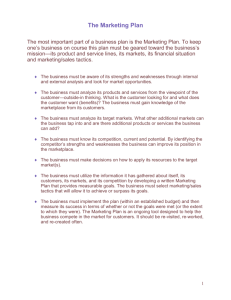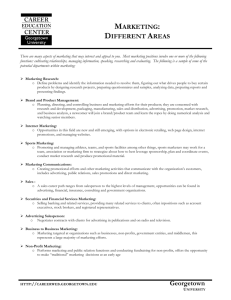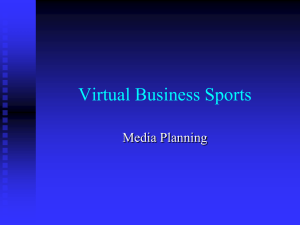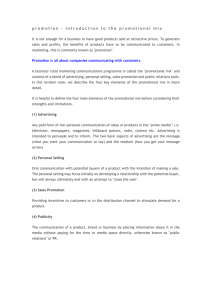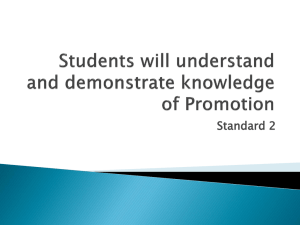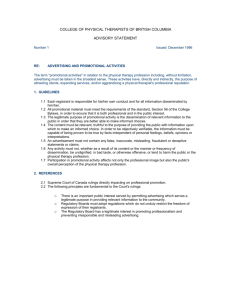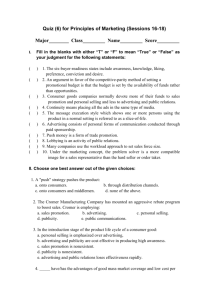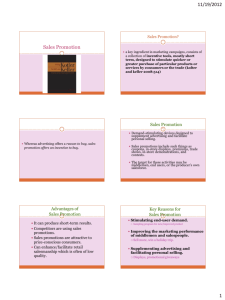File
advertisement
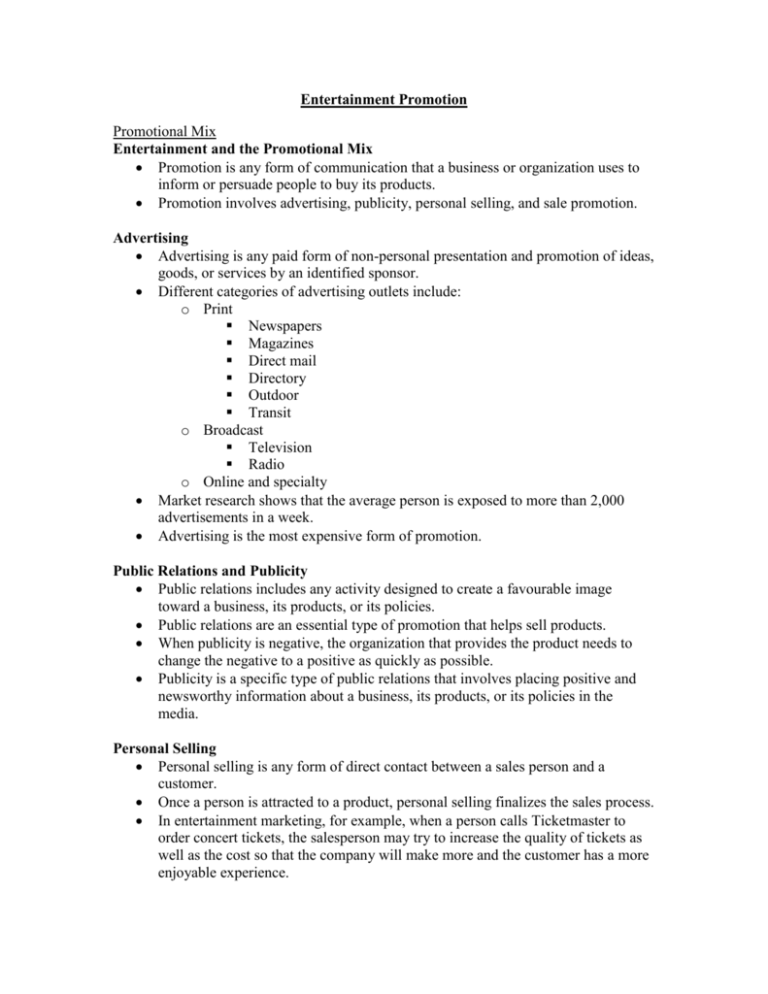
Entertainment Promotion Promotional Mix Entertainment and the Promotional Mix Promotion is any form of communication that a business or organization uses to inform or persuade people to buy its products. Promotion involves advertising, publicity, personal selling, and sale promotion. Advertising Advertising is any paid form of non-personal presentation and promotion of ideas, goods, or services by an identified sponsor. Different categories of advertising outlets include: o Print Newspapers Magazines Direct mail Directory Outdoor Transit o Broadcast Television Radio o Online and specialty Market research shows that the average person is exposed to more than 2,000 advertisements in a week. Advertising is the most expensive form of promotion. Public Relations and Publicity Public relations includes any activity designed to create a favourable image toward a business, its products, or its policies. Public relations are an essential type of promotion that helps sell products. When publicity is negative, the organization that provides the product needs to change the negative to a positive as quickly as possible. Publicity is a specific type of public relations that involves placing positive and newsworthy information about a business, its products, or its policies in the media. Personal Selling Personal selling is any form of direct contact between a sales person and a customer. Once a person is attracted to a product, personal selling finalizes the sales process. In entertainment marketing, for example, when a person calls Ticketmaster to order concert tickets, the salesperson may try to increase the quality of tickets as well as the cost so that the company will make more and the customer has a more enjoyable experience. Sales Promotion Sales promotions typically involve short-term incentives that encourage a customer to buy a product. Most common sales promotion is know as the coupon or discounts Disney works with other companies to promote their products, know as cross promotion. Variety of Promotional Methods Media Advertising Media advertisement is any form of advertising that uses media such as television, radio, the Internet, newspapers, or magazines to promote ideas, goods, or services. Many media advertising campaigns have produced some popular and memorable ads and commercials. Media has helped to enhance promotional plans. Non-Media Advertising Non-media advertising is any form of advertising that uses methods other than the media to promote ideas, goods, or services. These advertisements, such as airplane banners, are good promotional tools because they are unique in comparison to media-style promotions. Other non-media promotions include direct mail promotions in your mailbox as well as flyers handed out at various events or near popular attractions. Other Promotional Methods There are several other methods of promotion used by companies. It is quite common to see promotions from two or more companies that combine as a tie-in. Cross-selling allows a company to promote or link products within its own product assortment. Cross-selling occurs when you buy tickets for a concert or movie; the backside of the ticket may offer discounts at the concession stand. You are probably most familiar with product placement; the locating and negotiating of prominent placement for a company’s product or name as a prop in media, such as film, television, or radio. Researching Diverse Markets Diverse markets include groups that vary in their ethnic, national, cultural, and geographic characteristics. Example: when promoting a product to a Hispanic group, marketers must learn the traits and habits about this target market. Since promotion is one of the most expensive aspects of marketing, it is important to consider the variety of diverse markets that might be interested in a product. International entertainment products, such as music, books, TV, and films, may require specialized promotion and marketing, but the possibility for generating revenue and worldwide recognition is great.
